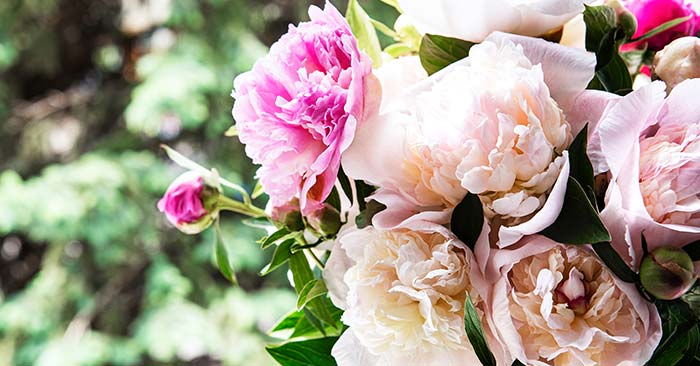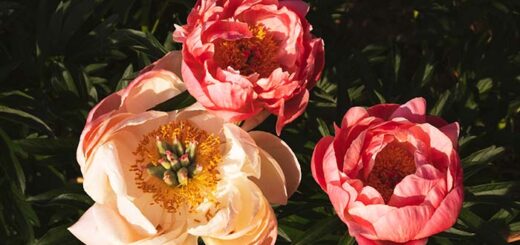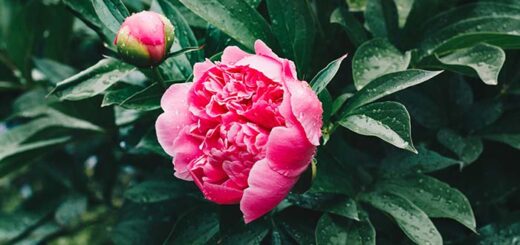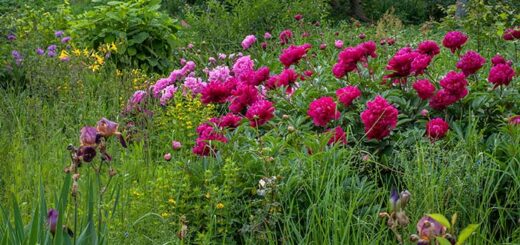Extend the Blooming Season of Your Peonies
Peonies are beloved for their large, fragrant blooms and lush foliage, making them a favorite in many gardens. However, their bloom period can be short-lived, leaving gardeners yearning for more. Fortunately, there are several techniques you can employ to extend the blooming season of your peonies. This guide will walk you through the essential steps to maximize the beauty and longevity of your peony flowers.
Understanding Peony Varieties
To effectively extend the blooming season, it’s crucial to understand the different types of peonies and their bloom times. Peonies are typically classified into three main types:
Herbaceous Peonies
Herbaceous peonies are the most common type. They die back to the ground each winter and reemerge in the spring. Their bloom period usually lasts from late spring to early summer.
Tree Peonies
Tree peonies are woody shrubs that keep their above-ground structure throughout the year. They bloom earlier than herbaceous peonies, often in mid to late spring.
Intersectional (Itoh) Peonies
Intersectional peonies are hybrids between herbaceous and tree peonies. They combine the best traits of both types, including a longer blooming period. They typically flower from late spring to early summer.

Image Source: Envato Elements
Selecting Varieties for Extended Bloom
One of the most effective ways to extend the blooming season is to plant a combination of early, mid, and late-blooming peony varieties. This staggered approach ensures that as one variety finishes blooming, another begins. Here are some examples:
Early Bloomers
- ‘Coral Charm’: Known for its vibrant coral-pink blooms, this variety typically blooms in early spring.
- ‘Roselette’: This peony features delicate pink flowers and blooms early in the season.
Midseason Bloomers
- ‘Sarah Bernhardt’: A classic favorite with large, double pink flowers blooming in mid-spring.
- ‘Red Charm’: This variety boasts deep red, fully double blooms that appear mid-spring.
Late Bloomers
- ‘Bowl of Beauty’: This peony blooms later in the spring with its unique two-toned flowers.
- ‘Felix Crousse’: Featuring vibrant red blooms, this variety extends the blooming season into late spring.
Proper Planting Techniques
Proper planting techniques are essential to ensure healthy, long-lasting blooms. Here are some tips for planting peonies:
Site Selection
Choose a location that receives at least six hours of sunlight per day. Peonies prefer well-drained soil and do not tolerate waterlogged conditions.
Soil Preparation
Prepare the soil by incorporating organic matter such as compost or well-rotted manure. Peonies thrive in slightly acidic to neutral soil with a pH between 6.0 and 7.0.
Planting Depth
Plant peonies with eyes (buds) no more than 2 inches below the soil surface. Planting too deeply can inhibit blooming.
Spacing
Space peony plants at least 3 feet apart to allow for good air circulation, which helps prevent disease.
Proper Care and Maintenance
Regular care and maintenance are crucial to keep your peonies blooming for as long as possible. Here are some key practices:
Watering
Peonies need consistent moisture, especially during dry periods. Water deeply but infrequently, allowing the soil to dry out slightly between waterings.
Fertilizing
Apply a balanced fertilizer in early spring as new growth begins. Avoid excessive nitrogen, as it can promote leafy growth at the expense of blooms.
Mulching
Apply a layer of mulch around the base of the plants to conserve moisture and suppress weeds. Avoid covering the crown of the plant to prevent rot.
Staking
Many peony varieties produce large, heavy blooms that can benefit from staking. Install supports early in the season to prevent damage to the stems and flowers.
Pruning and Deadheading
Pruning and deadheading are essential for maintaining plant health and encouraging prolonged blooming.
Deadheading
Remove spent blooms promptly to prevent the plant from directing energy into seed production. This can encourage more blooms and a tidier appearance.
Pruning
Cut herbaceous peonies back to the ground in late fall after the foliage has died. For tree peonies, remove any dead or damaged wood in early spring before new growth begins.
Disease and Pest Management
Peonies are relatively pest-free but can be susceptible to certain diseases and pests. Proper management is essential for healthy, long-lasting blooms.
Common Diseases
- Botrytis Blight: This fungal disease causes buds and leaves to turn brown and rot. Remove and destroy affected plant parts and improve air circulation.
- Powdery Mildew: Characterized by a white, powdery coating on leaves, this fungal disease can be managed by improving air circulation and applying fungicides if necessary.
Common Pests
- Aphids: These small, sap-sucking insects can be controlled with insecticidal soap or by encouraging natural predators like ladybugs.
- Ants: While not harmful to peonies, ants are often attracted to the sugary nectar produced by the buds. To deter them, keep the area around the plants clean and debris-free.
Seasonal Care
Different seasons require different care practices to keep your peonies healthy and blooming beautifully.
Spring
- Remove Winter Mulch: As the weather warms, remove any winter mulch to allow new growth to emerge.
- Apply Fertilizer: Feed your peonies a balanced fertilizer to support strong growth and blooming.
- Install Supports: Place stakes or hoops around the plants to support heavy blooms.
Summer
- Water Regularly: Ensure consistent moisture during dry periods.
- Deadhead Spent Blooms: Remove faded flowers to encourage continued blooming and prevent seed production.
Fall
- Cut Back Herbaceous Peonies: Trim herbaceous peonies to the ground after the foliage has died.
- Mulch: Apply a layer of mulch around the base of the plants to protect the roots during winter.
Winter
- Protect Tree Peonies: Consider wrapping the stems with burlap to protect tree peonies from harsh winter conditions.
- Monitor for Disease: Monitor for any signs of disease and take action as needed.
Companion Planting
Companion planting can enhance the beauty of your peony garden and help extend the blooming season.
Early Bloomers
- Tulips: These early spring bloomers can provide color before your peonies start to flower.
- Daffodils: Another early bloomer, daffodils can add vibrant color to your garden.
Late Bloomers
- Daylilies: These summer-blooming perennials can provide color after your peonies have finished.
- Astilbes: With their feathery plumes, astilbes can add interest to the garden in late summer.
Conclusion
You can enjoy an extended blooming season in your garden by selecting various peony types and varieties, planting them properly, and providing consistent care and maintenance. From early spring to late summer, these beautiful flowers can provide continuous color and fragrance, making your garden a delight. Remember to monitor for pests and diseases and to adjust your care practices as needed throughout the year.
FAQs on Extend the Blooming Season of Your Peonies
Q: How can I extend the blooming season of my peonies?
A: Plant a mix of early, mid, and late-blooming varieties, and follow proper planting, care, and maintenance techniques.
Q: What are some early-blooming peony varieties?
A: Early-blooming varieties include ‘Coral Charm’ and ‘Roselette,’ which typically bloom in early spring.
Q: Can I extend the blooming season by deadheading my peonies?
A: Yes, deadheading spent blooms can encourage the plant to produce more flowers and maintain a tidier appearance.
Q: Is it possible to make peonies bloom twice in one season?
A: Peonies generally bloom once per season, but planting varieties with staggered bloom times can give the appearance of an extended season.
Q: How does companion planting help extend the peony blooming season?
A: Companion plants like tulips and daylilies can provide continuous color before and after peonies bloom, creating an extended period of garden interest.
Q: What fertilizer should I use for peonies to prolong blooming?
A: Use a balanced fertilizer in early spring. Avoid high nitrogen fertilizers, which promote leafy growth over blooms.
Q: How can mulching help extend the peony blooming season?
A: Mulching conserves moisture and suppresses weeds, helping peonies stay healthy and reducing stress that can affect blooming.
Q: What is the best time to plant peonies for an extended blooming season?
A: Plant peonies in the fall to give them a head start in establishing roots, ensuring robust growth and blooms in the following spring.
Q: How should I space my peony plants to promote longer blooming?
A: Space peonies at least 3 feet apart to ensure good air circulation, which helps prevent diseases that can shorten the blooming period.
Q: Can pruning peonies incorrectly affect their blooming season?
A: Yes, improper pruning can damage the plant and affect blooming. Prune herbaceous peonies in late fall and tree peonies in early spring.
Q: How does weather impact the blooming season of peonies?
A: Extreme weather, such as late frosts or prolonged heat, can shorten the blooming period. Protecting plants from harsh conditions can help maintain blooms.
Q: What role does soil quality play in extending the blooming season of peonies?
A: Well-drained, nutrient-rich soil supports healthy growth and vibrant blooms. Amending soil with compost or organic matter can improve soil quality.
Q: Can artificial lighting extend the peony blooming season indoors?
A: While artificial lighting can support growth indoors, it is challenging to replicate the conditions needed to significantly extend the blooming season.
Q: How often should I water my peonies to keep them blooming longer?
A: Water peonies deeply but infrequently, allowing the soil to dry out slightly between waterings to avoid root rot and promote healthy blooms.
Q: Are there any pests that can shorten the blooming season of peonies?
A: Yes, pests like aphids can damage blooms. Controlling pests early with natural predators or insecticidal soap can help maintain healthy blooms.


